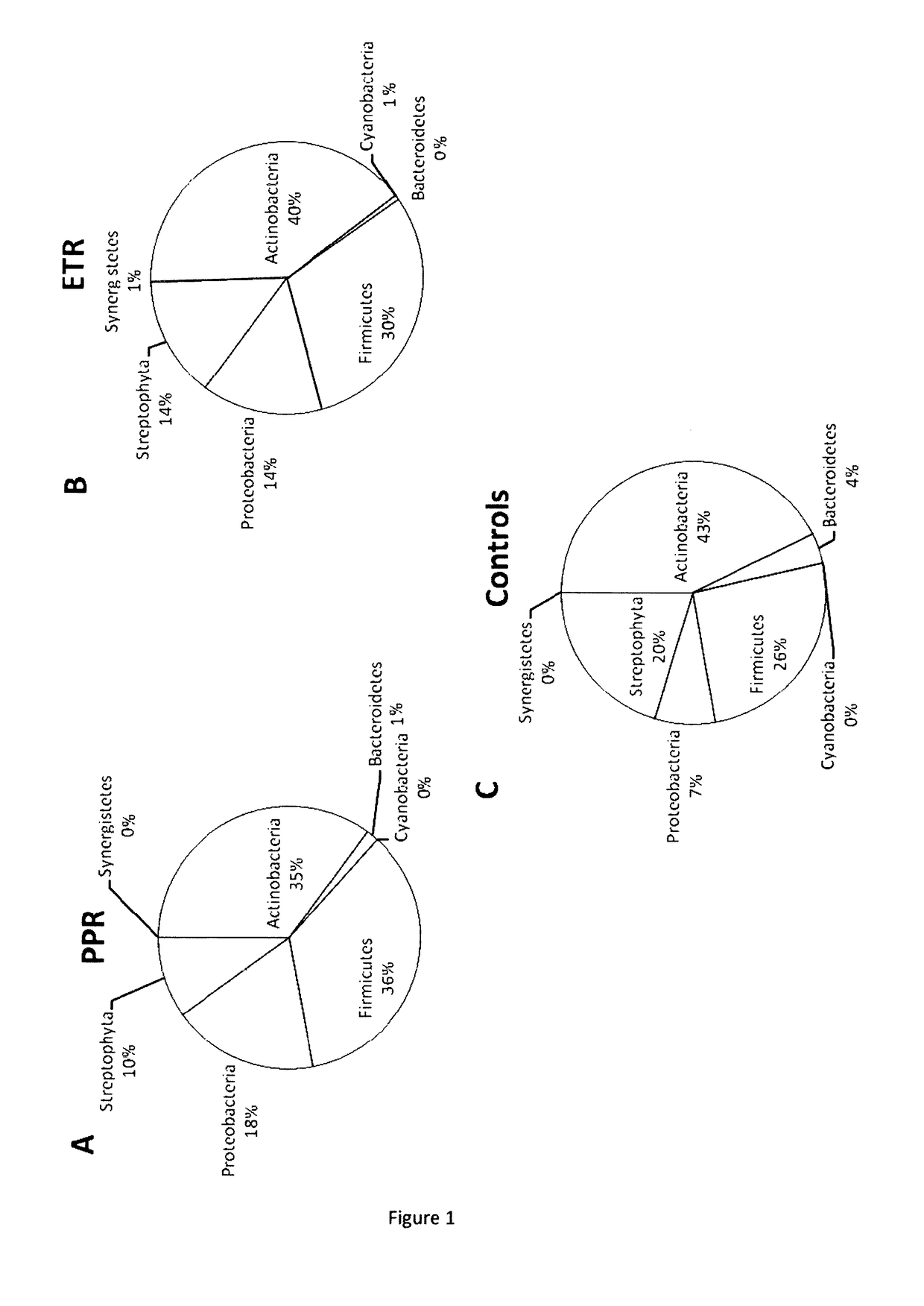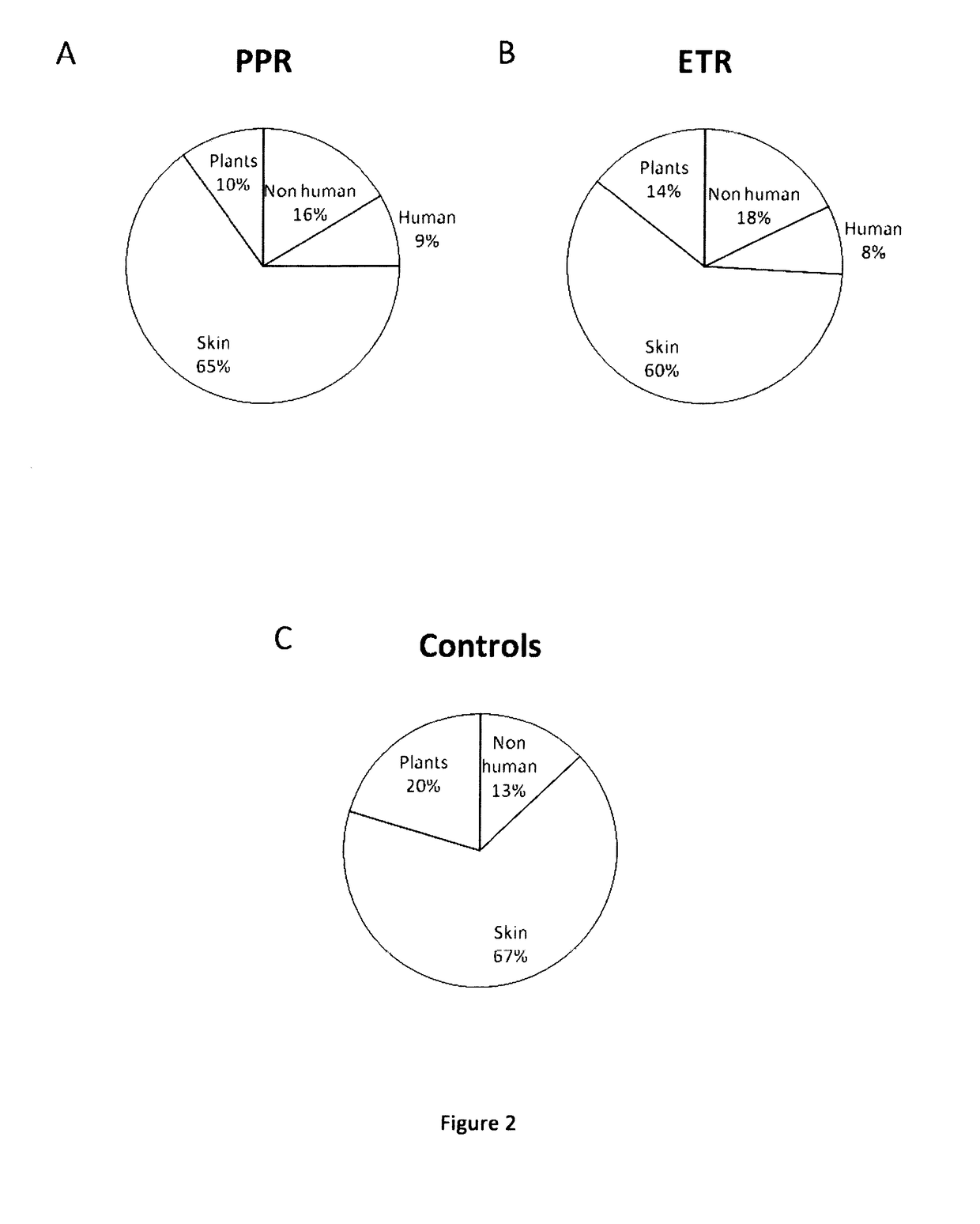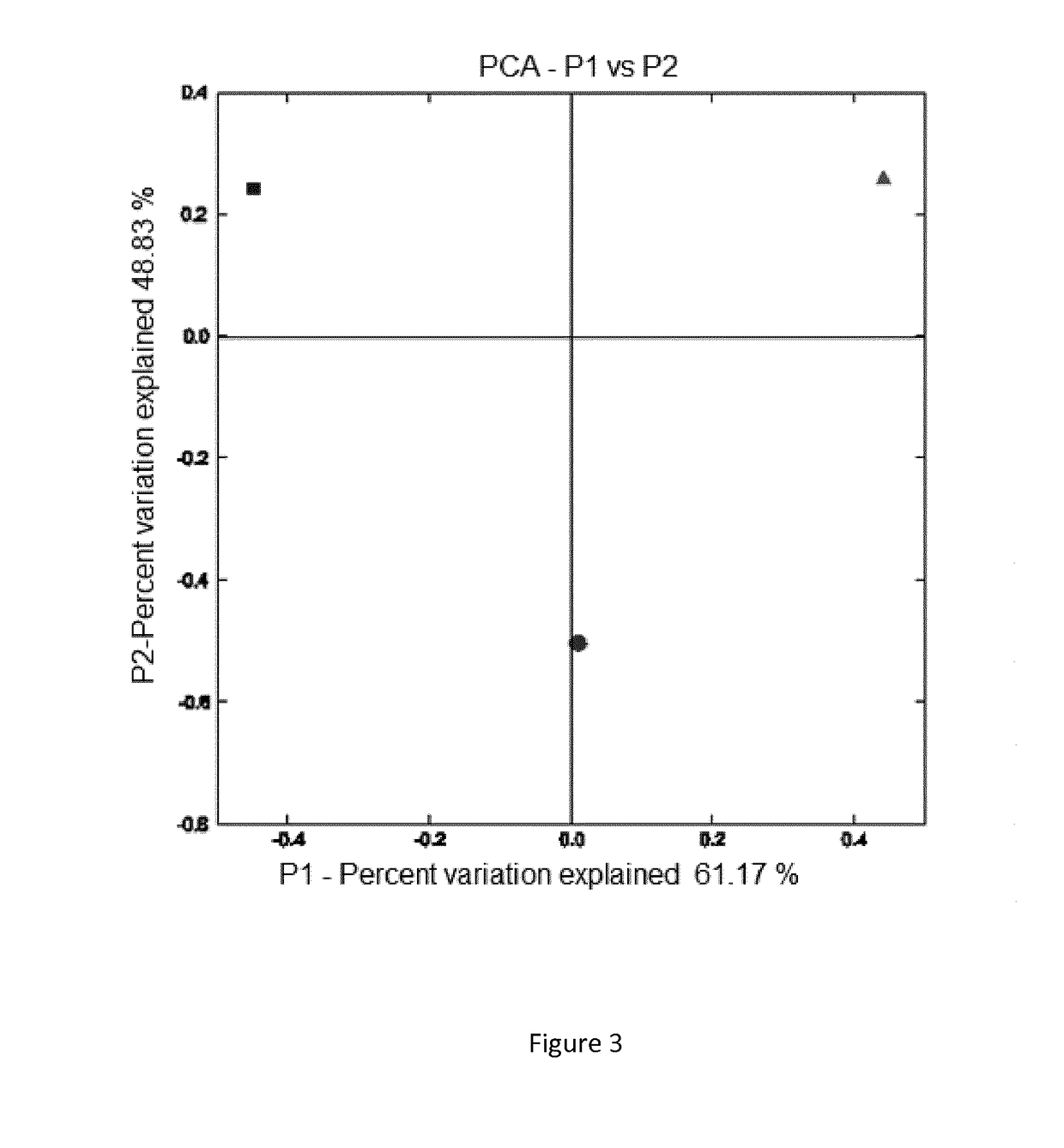Method for the diagnosis of rosacea
a rosacea and skin disease technology, applied in the field of rosacea diagnosis, can solve the problems of small number of studies that failed to demonstrate an increase in rosacea demodex density in patients with rosacea, culture-dependent studies that do not allow for a consistent picture of the skin microbiota, and achieve the effect of reducing the prevalence of actinobacteria
- Summary
- Abstract
- Description
- Claims
- Application Information
AI Technical Summary
Benefits of technology
Problems solved by technology
Method used
Image
Examples
example 1
[0085]Material and Methods
[0086]Sampling
[0087]Demodex Folliculorum sampling was performed using standardized skin surface biopsy (SSSB). This is a non-invasive sampling method by which it is possible to collect the superficial part of the horny layer and the complete follicle contents. With this technique it is possible to analyse the composition of microorganisms present in each layer.
[0088]Two successive samplings were performed on the nasolabial fold of patients with erythematotelangiectatic rosacea (ETR), papulopustular rosacea (PPR) and Healthy volunteers using a modified protocol of the formerly described method. The Demodex Folliculorum were separated under microscope from other parasites and debris before genomic analysis. Approximately fifteen samples per group were obtained and sent to us by ProDerm (Germany, Hamburg). Samples were conserved at −80° C. after reception.
[0089]Observation and Separation of Demodex
[0090]After centrifugation at 4722 g for 10 minutes, the botto...
example 2
[0138]Materials and Methods
[0139]Study Population
[0140]55 subjects from the general population of Schenefeld / Hamburg and the neighboring communities so that 45 subjects were enclosed: 15 subjects with erythematotelangiectatic rosacea with flushing and persistent central facial erythema, optional telangiectasia (mean age 54.89±10.49), 15 subjects with papulopustular rosacea defined as moderate to severe with persistent central facial erythema, transient papules and / or pustules (mean age 50.86±11.2) from the Galderma rosacea database and 15 healthy subjects with no active skin disease (mean age 52.38±13.68). Subjects with rosacea received no treatment and were asked to stop treatment with Benzylbenzoate, Lindan, Pyrethrin, Malathion, Allethrin, Crotamiton and Metronidazole at least 7 days before sampling.
[0141]Sampling
[0142]Standardized skin surface biopsies were performed on the alar crease (side of the nostrils) of patients with erythematotelangiectatic rosacea (ETR) and papulopustu...
example 3
[0190]Materials and Methods
[0191]Study Population
[0192]81 subjects from the general population of Schenefeld / Hamburg and the neighboring communities so that 60 subjects were enclosed: 15 subjects with erythematotelangiectatic rosacea with flushing and persistent central facial erythema, optional telangiectasia (mean age 52.8±10.86), 15 subjects with papulopustular rosacea defined as moderate to severe with persistent central facial erythema, transient papules and / or pustules (mean age 51.46±9.14) from the Galderma rosacea database and 30 healthy subjects with no active skin disease (mean age 51.9±13.31). Subjects with rosacea received no treatment and were asked to stop treatment with Benzylbenzoate, Lindan, Pyrethrin, Malathion, Allethrin, Crotamiton and Metronidazole at least 7 days before sampling.
[0193]Sampling
[0194]See example 2
[0195]Observation and Separation of Demodex
[0196]See example 1.
[0197]External Decontamination
[0198]See example 1.
[0199]DNA Extraction
[0200]See example ...
PUM
| Property | Measurement | Unit |
|---|---|---|
| volume | aaaaa | aaaaa |
| volume | aaaaa | aaaaa |
| nucleic acid sequences | aaaaa | aaaaa |
Abstract
Description
Claims
Application Information
 Login to View More
Login to View More - R&D
- Intellectual Property
- Life Sciences
- Materials
- Tech Scout
- Unparalleled Data Quality
- Higher Quality Content
- 60% Fewer Hallucinations
Browse by: Latest US Patents, China's latest patents, Technical Efficacy Thesaurus, Application Domain, Technology Topic, Popular Technical Reports.
© 2025 PatSnap. All rights reserved.Legal|Privacy policy|Modern Slavery Act Transparency Statement|Sitemap|About US| Contact US: help@patsnap.com



